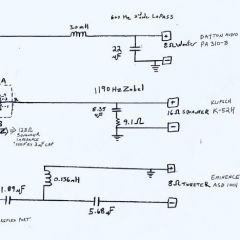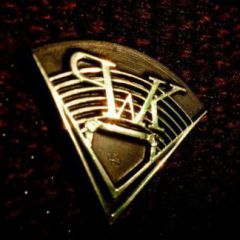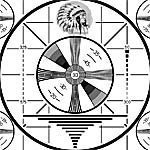Search the Community
Showing results for tags 'Upgrade'.
-
I copied my round up post over from this thread, please list any other LaScala mods, threads and parts sources. https://community.klipsch.com/index.php?/topic/149442-lascala-sonic-detail-improvement-for-only-22098/page-7#entry1926774 My LaScalas are circa 1980 Stock AA crossovers If I want to make improvements or changes in incremental steps, this is what I understand: Based on the above posts, and a conversation (2-3 years ago) with B Crites and the Klipsch factory support guy, the drivers in the LaScala don't wear out under normal circumstances. The capacitors, on the other hand do have an end of life, the transformer and inductor rarely fail (it would probably require an amp incinerating failure to fry the inductor or transformer). First: Update the 3 caps on the AA crossover, from the schematic in the pinned section. Stock: Sonicaps from Crites or others inc Parts Express brand. To me, stock always sounded very good 2x 2uF capacitors 1x 13uF Alternative Crossover update to lower the volume mids by 3db aka 50% decrease in power to Squawker. This is done to flatten the output across the bass and mids? I currently use an EQ to add output at the 400Hz point and rolling off into the up and down freqs from this point. 2x 2uF caps 1x 6.8 uF cap Both of these updates-mods are stand-alone and can be listened to and evaluated without further mods or repairs. Second This step could be either replace the K-77 (matched ?) phenolic tweeters with the Crites CT-125 EV driver with custom Crites Lens and titanium diaphragm. OR Replace the woofer with the Crites stamped Woofer $$, or Eminence Kappa 15C $, also mentioned above is the K-44 Factory $$$ woofer. http://www.parts-exp...-4-ohm--290-459 Both the tweeter and the woofer "upgrades" are standalone changes and require no mods to the crossover or anything else. Third If the K-77 is replaced with the Crites CT 125, as an option after moving to the CT-125.....the crossover point between the Squawker and the CT-125 can be lowered to take advantage of the increased range of the CT-125. Thread on CT-125 topic, one of many? https://community.kl...rs-in-la-scala/ Thread on Crossovers https://community.kl...pgrade-options/ Volti take on LaScala http://www.klipschup...upgrades2.shtml More horns + ALK http://www.alkeng.com/trachorn.html Alethia's take on custom crossovers http://www.aletheiaa...m/Services.html Crossover Options with CT-125: Do nothing leave at 400 and 6,000Hz, replace crossover 400 and 4,500 Hz, somehow modify existing crossover to 400 and 4,500. Forgot to mention the ALK Universal, I'm sure there are others.... The existing crossover may be modified, I don't know how. OR The AA crossover can be replaced with a new A 4500 from Crites http://www.critesspe...00-crossov.html "Problem with this is that the K-55 mid-range driver is pressed really hard to reach 6000hz. It would be much more linear in it's operation if the highest frequencies it has to reproduce were in the 4500hz area." Note: I'm guessing that PK the Designer was aware of this, and perhaps no better option was available than the EV K-77 tweeter, AND OR the mid-range K-55 is so sweet with the voice that it is better to leave as much of the voice as possible on the K-55 up to 400- 6KHz. Maybe if we had the engineer's notes we could know how the decision was made, I'm sure lots of trial and "does this sound better than"........ My opinion the LaScala: PK was a very good audio engineer, everything was done for a reason. Speakers that sound good, sell better. Was the mid range 400-6,000 intentionally boosted to put the human (Female) voice more forward aka Hear the Angels Singing? The K-55 really makes the angels sing. The low end could be better, a design trade off
- 81 replies
-
- 2
-

-
- AA crossover
- ALK
-
(and 6 more)
Tagged with:
-

Heresy Upgrade for Gravitas, Scale and Flat Response
Antone posted a topic in Technical/Restorations
I have discovered an easy formula for addressing the two largest problems with the sound of my beloved 1981 Heresy 1.5's (Heresy 1 drivers with the E2 balancing network). The K22-E woofer is not efficient enough to balance the squawker, even with the 9 dB attenuation via the T2A autotransformer. The enclosure contains only 1.6 cubic feet-before subtracting the drivers' and crossover's respective displacements. These limiting factors are familiar to most of you. I have achieved a vast improvement in frequency response, rhythmic drive, listenability and flexibility of room placement by changing-reversibly-only a few things. Bonus: 4dB increase in sensitivity over stock (96 dB/W @ 3 ft) to 100+ dB/W @ 1 m. I sought long and hard a 12" woofer with an efficiency of at least 96 dB/W (2 dB/W more than the Klipsch woofer) that possessed Thiele-Small parameters appropriate for a small, ported enclosure. (Running computer simulations for the Heresy's 1.5 cu.ft.of useable volume, I quickly discovered that physics will limit the extension of unported cabinets to a 3 dB down point (F3) around 70 Hz, regardless of any woofers I can fit.) I found two worthy candidates in the professional sound reinforcement category. The two readily and cheaply available candidates were the Peavey Sheffield Pro 1200+ and the Dayton Audio PA 310-8 12" woofers. My free speaker box calculator app showed that the Dayton woofer ($60 each) yielded the better maximum flat bass amplitude of these two 96 dB/W-candidates. Since I will not damage my one-owner vintage Klipsches (got them brand new in 1982), I bought a half-sheet of 1/2" thick MDF to make a new, port-friendly back panel for the Heresy cabinet and a short length of 3" diameter white PVC pipe along with a 3 1/2" hole saw at the hardware store. I just traced the original back panel and transferred the screw holes onto the MDF. Good measurements and at least a circular saw will give you better results. The box calculator app indicated that a 3" long tube of 3" inside diameter would tune the cabinet to 50 Hz to produce the lowest F3 possible with these woofers: 56.7 Hz. I know that does not seem great, but keep in mind that the simulator app showed the factory woofer's unported F3 at above 70 Hz, plus it was too quiet to balance the squawker and cannot play as loud as the 450 W- capable PA 310-8. You seeing where the "Scale and Gravitas" come in? I installed with hot glue the 3" I.D. by 3"long tubes in the lower outer corners of the MDF panel where the pipe would not foul anything (e.g. wooden cleats) inside the box. Since this new, much beefier woofer has a nominal 8 Ohm impedance instead of the Klipsch woofer's 11 Ohms, I modified the values of L2 and C2 in the Klipsch 'Balancing Network' (crossover) 12 dB/octave woofer low-pass section to achieve the smoothest transition to the squawker. Measurements with pink noise, a calibrated measurement microphone and RTA program led me to a standard second order 600 Hz low pass circuit for 8 Ohms,. That is, I merely changed the original woofer inductor L2 from 4 mH to 3.00 mH ( by unwinding some coils and measuring with an LC meter) and replaced C2, originally 33 muF, to 23.4 muF (a 22muF bipolar 100-Volt electrolytic in parallel with small value poly caps to sum to 23.4 muF). I left the squawker section totally stock, except for replacing the spam can 2 muF squawker capacitor (connected to T2A terminal 5) with a polypropylene Jantzen of the same value. The woofer now smoothly and powerfully balances that magic midrange horn. The speaker can now be placed a couple feet from the wall and still have much better bass than ever. With the Eminence ASD 1001 titanium tweeter driver screwed onto the factory tweeter horn [phase plug removed] with an adapter plate, described in my earlier posts, I measured very flat response from 50 Hz to 19 kHz +/- 2.8 dB ,with 1-octave smoothing; 101 dB SPL at 3 feet with 2.83 V pink noise in a medium sized, carpeted room. The room actually created a modest bass hump to make 40 Hz quite audible ( with the speakers over two feet from the back wall! ). I found that a third order 18 dB/octave high pass circuit at 6 kHz (8 Ohm), without going through the T2A at all, works wonderfully with the ASD 1001 and K52H squawker to prevent that deadly upper midrange hump, combined with the anemic bass, which made the stock Heresy's notorious, especially on denser sonic textures - and right hand piano notes should not honk. Only a narrow 1.5 dB hump at 1.2 kHz and a shallow 1.6 dB depression between 400 and 800 Hz and no spikes anywhere. This is the way I have always wished they had sounded. Bigger, smoother, sweeter. -

Heresy Upgrade for Gravitas, Scale and Flat Response
Antone posted a topic in Technical/Restorations
Here are the RTA and Spectrum Analysis Graphs of the measurements resulting from the modifications described in the first post in this thread. Bear in mind that these readings were not taken in an anechoic chamber or outdoors, but in my listening room, well away from the walls.. All horizontal graph lines are 5 dB apart. These graphs have not been edited. These measurements were taken at less than a Watt of drive power. The Dayton Audio UMM 6 measurement mic and REW software were used on a Toshiba Windows 7 laptop computer. At 2.83 Volts of pink noise the result- not shown here- was 101 dB at 3 feet, 100.4 dB at 1 meter. The first two graphs are RTA of pink noise at 3 feet, with 1-octave smoothing on the first graph and with one third octave-smoothing on the second graph. The third graph is spectrum analysis of white noise, with psychoacoustic smoothing. The final graph shows pink noise RTA with one octave smoothing, locating the mic at the listening position. The crossover schematic responsible for these results is included. -
This is a poll about upgrading a budget system. What path is the best one to increase sound quality?
-
Hello to all of my Klipsch brothers and sisters! This is my first post although I have been perusing the site for some time. Before I get to my main Q, let me tell you a little about me so you can understand me a little better: I am a live sound engineer and have a very solid knowledge of audio gear (mostly in the pro sound world) as well as acoustics (but no formal schooling in the matter) and electrical components / mods / repairs / etc.. I am also a prowd owner of Klipsch speakers, buying my first 6x Klipsch KSB1.1's brand new right when they were getting replaced by the SB line, to use for my surround setup (I know they made center/rear speakers using similar components, but I bought all the same model to preserve consistency across all channels since different models have different sizes and driver counts, and because I was getting a great deal on them!), around 2008ish. After eventually adding a subwoofer (Hsu 10" model) and a couple more 1.1's used, and going thru a few different drive systems (from 4 channels of Soundcraftsmen PA5001 w/ a shure analog and technics digital surround processor back in the day to a Marantz 6.1 receiver to a Yamaha aventage RX-A1040 which is what I currently have, with 4x ksb1.1's flown around sides and back, and three in front for L/C/R). I was "that guy" who went into the Bose store years ago and sat in on the "Demo Room" they had set up, then when I came out and they asked me what do I think, I told them I could hear the speakers fatiguing and distorting toward the end! They asked me what I normally listen to, and when I told them what I do and what I have, the "sales guy" admitted that their products will probably not suit me!!! So to my Question: I am now a proud home owner (well I share one common wall with a couple of older folk who cant appreciate their side of the duplex vibrating) so I cant exactly jam how I would like, or turn up a movie to real-life-action often, but I like to have the headroom!!! I have been using these KSB 1.1's for a long time now and I still love them (although I find it very strange that the pink noise blasts from the Yamaha sound different in each speaker, I found it was in either the amp and/or room acoustics as I tried swapping boxes on one channel and they do sound the same). Luckily the amp has pretty good parametric EQ control, so bringing home my SMAARTLIVE system from work I was able to dial everything in pretty nicely, and align the timing between boxes with precision!!! So I want to upgrade. I don't want a "whole new system" and with house and kids and working in the entertainment business and a house-mom for a wife, I don't have the budget for anything new!!! I was keeping my eyes peeled for a local deal on a KSF10.5. I seen a few deals on 8.5's but Im the type of guy who goes large or goes home when I deal with audio, so 10.5 what I'm looking for. I just came across a STEAL on a pair of RF-3's (original, not series 2) (under $200 for the pair!!!). I flirted with the idea of upgrading the series but the big question is if I upgrade the main L/R but not ATLEAST the center (which covers the bulk of sound) then will the tonal balance across the front sound stage be too different and not as pleasing as the lesser quality boxes with similar tonal balance across the system? My original plan was to get floor standing speakers for mains, and then "up"grade the current front KSB-1.1 to Front High speakers (or whatever they call that?) How different is the KSB's general tonal balance from the RF3's, and is it something the Aventage EQ woudnt be able to fix to an acceptable degree? Note that the system is MOSTLY used for general TV watching (by the family, I usually out working~) but occasionally I like to sit back and relax and let awesome sound surround and engulf me (until kids or wife ruin the zen experience!). Thank you for bearing with me (I have a hard time writing 2 sentence posts on these things!!!) and please if you have any ideas for me let me know, as I am anxious but hesitant at the same time to grab these RF3's... -AshayinFLA
-
Can I do this and will it improve the former sound or does the amplifier play too large of a role (plus I know the design for the 10d is very different)?
-
I recently hit the jackpot on craigslist and scored a complete system for just $299. The insane part is when you hear what the main speakers are. Mains: RF-7 Center: RC-3 Sub: KSW-12 Surrounds: RS-3. Receiver: Yamaha RX-V2400 EVERYTHING TOGETHER for only $299!!!!! And they're in good shape. He just wanted them out of there. Or his wife did. I already sold the sub and the receiver so I'm almost down to $0 for the RF-7s!!!!!!!!!!! Now, to see if I can upgrade the crossovers on the RF-7's. I tried to call Dean using the number and email listed on his facebook page but the number didn't work so I shot him an email and message but haven't heard back yet. Is he still doing crossovers? Or are there details and instructions somewhere so I can buy the parts and do it myself? Thanks!
-
Hi all - new to the forum but have had my RF5's 15+ years now. Bought 'em for the bachelor pad in the city, transferred to the marital home in the 'burbs, which also has a cat. Which means my grille cloth is under attack. Anybody find pre-cut (or easy enough to diy) metal grille covers to fit Klipsch floor speakers? Any other catproofing solutions work for anyone? Any help appreciated.
- 6 replies
-
- rf5
- metal grille
-
(and 3 more)
Tagged with:
-
Hello everyone! *ABOUT ME, SKIP DOWN FOR MY TOPIC* New to the forum, but I actually just got into Klipsch! My step dad has had the Quintet III for years now and he loves it and I admit it sounds damn good. Before I have what I have now, I owned the Polk Audio RM6750 surround system. It was a basic 5.1 channel with a small subwoofer. I used all of the surround speakers but never used the sub or the center channel. After hearing my step dad's set up, and with his Klipsch Sub10, I ended up building my own. It was during the time I loved building speakers, so I ordered the woofer off of eBay, bought a plate amp and port, and built it to the spec's of his. It turned out great! Also I custom built my center channel with speakers from HiVI, and crossover'd them. I had them all running through an older Yamaha 6.1 Receiver! Currently, this is what I have: Current Setup Klipsch R-15m --- Mains (2) Klipsch R-14m --- Surrounds (2) Custom HiVI --- Center Polk Audio PSW505 --- Subwoofer Pioneer Elite VSX-94TXH --- Receiver HISENSE 55h8c 4k --- Television So overall, my setup is decent however there are some problems with it. I've been looking everywhere for a suitable replacement for the receiver and I've come up with nothing in my price range really. The guy is a beast what can I say! The sound is very clear, it pushes 140 watts at 8 ohms which is rare to find because everything now says "WOW 250 watts in every channel! *in fine print* at 6 ohms! So now reduce the power a lot to get the 8 Ohms. The THX certification is a nice feeling to have even though the speakers aren't, and just overall it's very easy to use. Problem being, I'm trying to get a little more modern. The Elite only has HDMI 1.3 I believe, which doesn't support 4K pass-through. My question being, what would be a good upgrade receiver wise to give me similar sound/plus having 4K pass-through? OR, I have been considering if I went with a power amplifier and a cheaper receiver to do the same thing while allowing me to get 4K pass-through. I have looked into Emotiva, Rotel, Parasound and so on and all of them are quite expensive of course for a 5 Channel amp. Is any of this worth it? Or should I continue just running all of my stuff to my TV then exporting through optical? Thank you for reading, hope you have a good day! - Josh
-
I have read stuff on this website for a long time but this is my first post, so thanks in advance for any help. I have a nice pair of heresy II's but was thinking about having some tangent 400 cabs built and transferring the components of the herersy's to get better/lower LF. A) has anyone done this? B ) does anyone have the plans for tangent 400's (cant seem to find any online) C) if anyone has done this is it worth the effort?
- 16 replies
-
- upgrade
- tangent 400
-
(and 1 more)
Tagged with:
-
1. In simple terms, how exactly does a tractrix differ from an exponential horn in its design? 2. Also, what might be expected if the exponential horn from an earlier Heritage series driver were switched out with an equivalent Traxtrix version? From a listener's point of view, are all frequencies equally affected? (I'm particularly interested in hearing from anyone who has experienced this). 3. Anything else of interest?
- 28 replies
-
I am planning to upgrade my unmolested 1978 Khorns in the next week or so. I want to document the changes in a thread along with listening impressions. I'd like to use this thread for some suggestions from you Klipschites, then start a new thread for the actual changes. I have some questions, then I'd like to listen to your ideas. Comment on or critique anything you want. I took out all the other speakers in the living room weeks ago to get used to the the Khorn sound in Stereo mode. My other choice would be Pure Audio, meaning no audio processing by the Onk AVR. Onkyo TX-NR 717, bought in 2014. The 717 has basic Audyssey, 3 listening positions. It will set distances and trim level relative to reference, which usually means -12 db. I have disabled Audyssey and set both L/R to 0 trim. I could re-run Audyssey to get some baseline info. The Upgrade: I will be getting some Crites A/4500 crossovers and I will pull the Type AA. This means I can't use the stock K-77's. I will using some SEOS 12" horns and Denovo DNA-360 compression drivers I already had from another project. This will not be the same as a standard Crites A/4500 with the usual CT-120 or CT-125 tweeters. I don't want to change two variables at one time but I don't think I have much choice. Your opinions? I would like to put the new horn on the tophat, then move it front to back to experiment with some time alignment. And finally I was wanting to try putting some damping materials on the tophat to see if I could hear difference in reflection by using carpet, towel, maybe some foam sheets. Other suggestions?
- 34 replies
-
- khorn
- klipschorn
-
(and 3 more)
Tagged with:
-
I have been looking at doing some mods or trying the mods that Mdeneen have done to a Crown D45, as this post here. https://community.klipsch.com/index.php?/topic/150389-difference-between-crown-d45d60d75/ One of the questions that have came up is, is there a better replacement for the original mod or Op amp that was replaced. The original is a MC33079, the update per the mod was a Texas Instrument TL084. Here is some data on the 2. http://www.onsemi.com/pub_link/Collateral/MC33078-D.PDF http://www.ti.com/lit/ds/symlink/tl084m.pdf I believe they are both quad amp op amps, or what ever that means. There are some recommended replacements for the TL 084 which one is a TL 074, but I think someone advised against it. Anywho I was talking to Dr. Who and he himself are looking over the schematic to see exactly was it going on. But wanted to go to the threads as well to see what other ideas pop up. Here is the schematic for the D45 D45-75A J0650-2 Rev B (1).pdf For the record I am not trying to achieve much, just trying to have some fun hotrodding a little. Thanks
-
I have been looking at doing some mods or trying the mods that Mdeneen have done to a Crown D45, as this post here. https://community.klipsch.com/index.php?/topic/150389-difference-between-crown-d45d60d75/ One of the questions that have came up is, is there a better replacement for the original mod or Op amp that was replaced. The original is a MC33079, the update per the mod was a Texas Instrument TL084. Here is some data on the 2. http://www.onsemi.com/pub_link/Collateral/MC33078-D.PDF http://www.ti.com/lit/ds/symlink/tl084m.pdf I believe they are both quad amp op amps, or what ever that means. There are some recommended replacements for the TL 084 which one is a TL 074, but I think someone advised against it. Anywho I was talking to Dr. Who and he himself are looking over the schematic to see exactly was it going on. But wanted to go to the threads as well to see what other ideas pop up. Here is the schematic for the D45 D45-75A J0650-2 Rev B (1).pdf For the record I am not trying to achieve much, just trying to have some fun hotrodding a little. Thanks






